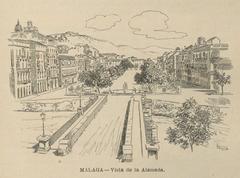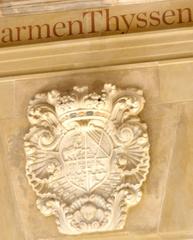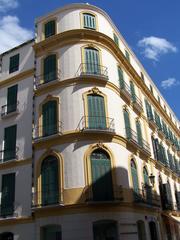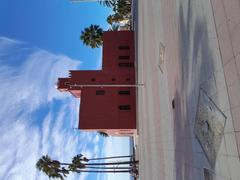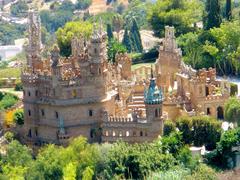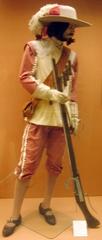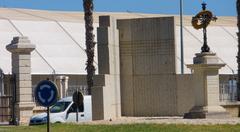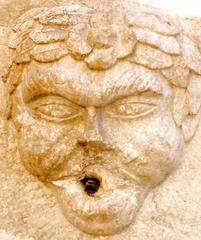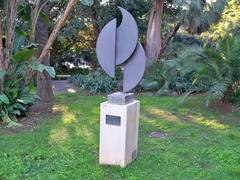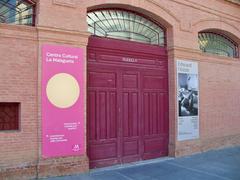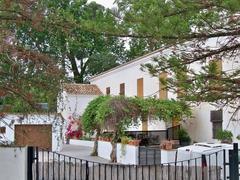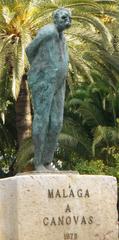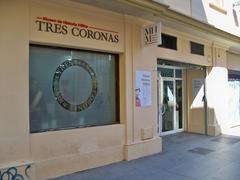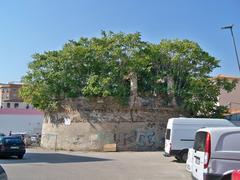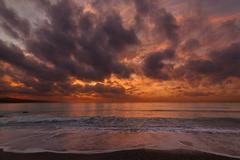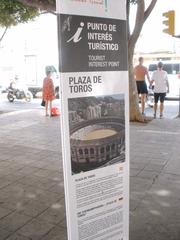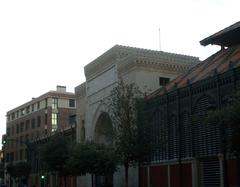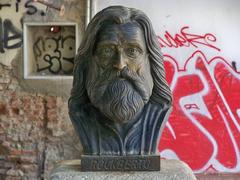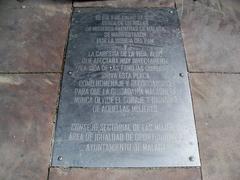Visiting La Farola in Málaga: History, Tips, and Visitor Information
Date: 16/08/2024
Introduction
La Farola, the iconic lighthouse of Málaga, Spain, is more than just a navigational aid; it is a beacon of history, culture, and architectural beauty. Erected in 1817 during the reign of Queen Isabella II, La Farola stands at the bustling harbor entrance of Málaga, guiding ships safely into the port for over two centuries (Visit Costa del Sol). Designed by Joaquín María Pery y Guzmán, this lighthouse is a blend of neoclassical and functionalist architectural styles, reflecting the maritime heritage and technological advancements of its time (Málaga Guru). With its cylindrical tower and lantern, La Farola’s design has evolved to accommodate both functionality and aesthetics, making it a beloved landmark and a symbol of Málaga’s rich maritime past.
Over the years, La Farola has undergone numerous technological upgrades, transitioning from an oil lamp to advanced LED technology, ensuring it remains a vital navigational aid (IALA Heritage). The lighthouse has also witnessed significant historical events, including damage during the Spanish Civil War, which necessitated extensive repairs. Today, La Farola is not just a functional structure but also a cultural icon, inspiring poets, artists, and the local community. It holds a special place in the hearts of Málaga’s residents and visitors alike, symbolizing the city’s enduring connection to the sea.
This comprehensive guide will delve into the rich history, architectural design, cultural significance, and practical visitor information for La Farola. Whether you’re a history enthusiast, a curious traveler, or a photography buff, this guide will provide you with everything you need to know about visiting La Farola in Málaga.
Table of Contents
Visitor Information
- Opening Hours: La Farola is open to visitors from 10:00 AM to 6:00 PM, Monday through Sunday.
- Ticket Prices: General admission tickets are €5 for adults and €3 for children under 12.
- Accessibility: The lighthouse is accessible to visitors with mobility impairments, with ramps and elevators available for ease of access.
- Travel Tips: It is recommended to visit early in the day to avoid crowds and to wear comfortable shoes for walking up the lighthouse stairs.
- Nearby Attractions: Close to La Farola, you can explore the Málaga Port, the Pompidou Centre, and the Málaga Park.
- Special Events and Guided Tours: Guided tours are available twice daily at 11:00 AM and 3:00 PM. Special events are often held during local festivals.
- Photographic Spots: The top of the lighthouse offers panoramic views of the city and the Mediterranean Sea, making it an ideal spot for photography.
History of La Farola
Origins and Construction
La Farola has a rich history dating back to the early 19th century. The construction of La Farola was initiated in 1816 and completed in 1817. The project was overseen by the engineer Joaquín María Pery y Guzmán, who was tasked with enhancing the safety of maritime navigation in the region. The lighthouse was built as part of a broader initiative to modernize the port of Málaga, which was becoming increasingly important for trade and commerce.
Architectural Design
La Farola stands out not only for its historical significance but also for its architectural design. The lighthouse is approximately 38 meters tall and was constructed using a combination of stone and brick, materials that were readily available at the time. The design of La Farola is a blend of neoclassical and functionalist styles, reflecting the architectural trends of the early 19th century. The lighthouse features a cylindrical tower with a balcony and lantern, which were essential for its primary function of guiding ships safely to the port.
Technological Advancements
Over the years, La Farola has undergone several technological upgrades to improve its functionality. Initially, the lighthouse was equipped with an oil lamp, which was later replaced by a more efficient kerosene lamp in the mid-19th century. By the early 20th century, La Farola was electrified, significantly enhancing its luminosity and range. Today, the lighthouse is fully automated and uses advanced LED technology, ensuring that it continues to serve its purpose effectively.
Historical Events
La Farola has witnessed numerous historical events that have shaped its legacy. During the Spanish Civil War (1936-1939), the lighthouse was damaged by bombings, which necessitated extensive repairs. The restoration work was completed in the early 1940s, preserving the lighthouse’s historical and architectural integrity. Additionally, La Farola has been a silent witness to the evolution of Málaga as a major port city, playing a crucial role in its maritime history.
Cultural Significance
La Farola is not just a functional structure; it holds significant cultural value for the people of Málaga. The lighthouse is one of the few in Spain with a feminine name, La Farola, which endears it to the local population. It symbolizes the city’s rich maritime heritage and serves as a beloved landmark for both residents and visitors.
FAQ
- What are the visiting hours for La Farola? La Farola is open to visitors from 10:00 AM to 6:00 PM, Monday through Sunday.
- How much do tickets to La Farola cost? General admission tickets are €5 for adults and €3 for children under 12.
- What is the best time to visit La Farola? It is recommended to visit early in the day to avoid crowds.
- Are there any guided tours available at La Farola? Yes, guided tours are available twice daily at 11:00 AM and 3:00 PM.
Conclusion
La Farola stands as a testament to Málaga’s enduring maritime heritage and cultural richness. Over two centuries, it has not only guided countless ships safely into the harbor but also inspired poets, artists, and the local community, earning its place as a beloved landmark. The lighthouse’s architectural beauty, historical significance, and modern technological advancements make it a must-visit for anyone exploring Málaga. From its strategic location at the harbor entrance to its role in pivotal historical events, La Farola encapsulates the spirit of a city deeply connected to the sea.
Visitors to La Farola can enjoy panoramic views of the Mediterranean, explore nearby attractions like the Málaga Port and the Pompidou Centre, and immerse themselves in the local culture. The lighthouse’s accessibility and the availability of guided tours and special events further enhance the visitor experience (InSpain.Wiki). Whether you’re taking in the views from the top, capturing stunning photographs, or simply enjoying a leisurely stroll along the promenade, La Farola offers a unique and enriching experience.
In conclusion, La Farola de Málaga is more than just a lighthouse; it is a symbol of the city’s rich maritime history and cultural heritage. Don’t miss the opportunity to visit this iconic landmark and explore all that Málaga has to offer. For more information and updates, download our mobile app Audiala, check out our related posts, or follow us on social media.
References
- Title: History of the Farola de Málaga, Source: Visit Costa del Sol Visit Costa del Sol
- Title: La Farola de Málaga Lighthouse, Source: Málaga Guru Málaga Guru
- Title: La Farola, Source: IALA Heritage IALA Heritage
- Title: La Farola Málaga Lighthouse, Source: InSpain.Wiki InSpain.Wiki
